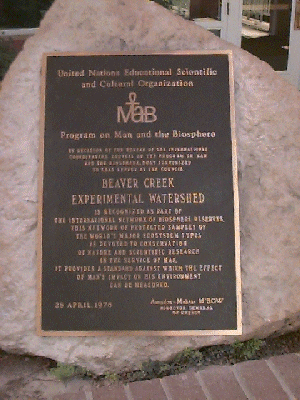Beaver Creek Biosphere Reserve | Drought
Fire Ecology | Invasives | Sinagua Circle
Beaver Creek Biosphere Reserve
What is a Biosphere Reserve?
Biosphere Reserves are designated by the United Nations Educational, Scientific, and Cultural Organization (UNESCO). They are terrestrial and coastal areas that can help address the problem of conserving biodiversity while promoting sustainable use. Such a reserve is unique from a management perspective, as its protection comes about through nomination by the national government, while responsibility for its management remains with the state in which the reserve is located.
UNESCO describes Biosphere Reserves as "'living laboratories' for testing and demonstrating integrated management of land, water, and biodiversity. Each biosphere reserve is intended to fulfil three basic functions, which are complementary and mutually reinforcing:
1. A conservation function - to contribute to the conservation of landscapes, ecosystems, species, and genetic variation;
2. A development function - to foster economic and human development that is socio-culturally and ecologically sustainable;
3. A logistic function - to provide support for research, monitoring, education, and information exchange related to local, national, and global issues of conservation and development."
About the Biosphere Reserve at Beaver Creek
Conserving biodiversity while simultaneously promoting sustainable use implies that public land managers must find a balance between meeting people's needs while also maintaining the stability of the ecosystem. The U.S. Forest Service Rocky Mountain Research Station, located in Flagstaff, is one of several agencies and organizations involved in the management of the Beaver Creek Experimental Watershed. They describe their goals as follows:

"The goals of the Beaver Creek Program are to provide land managers with: (1) essential facts about the biological, physical, social, and economic effects of multiresource management actions in ponderosa pine forests and pinyon-.,juniper woodlands; and (2) better ways to predict, display, and evaluate differences among the probable results of management alternatives before actions are initiated."




